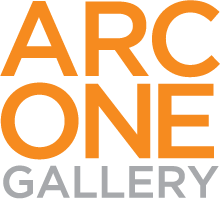ADAM HILL's work Bennelong Had a Point is now part of the permanent collection for the NATIONAL MUSEUM OF AUSTRALIA.
This work is a typically witty play on a cultural pun by Adam Hill.
Bennelong Point, the stretch of land where the Sydney Opera House now sits, is the site where Bennelong (a senior man of the Eora Aboriginal (Koori) people) was originally captured by Europeans in an attempt to create ties with the people of the land.
Rather than succumbing entirely to the colonial forces of the Europeans, Bennelong maintained a relationship with these figures, while trying to change the behaviour of Europeans on Aboriginal lands.
He spent many years as an interlocutor for the Europeans, and travelled to London. But did not relinquish his ties to his people or their land. His forethought into the potentially mutual impact that Aboriginal and European peoples could have on one another is...a fair point to be considered.
ADAM HILL
ADAM HILL has been accepted as a finalist for the Parliament of NSW Aboriginal Art Prize. This is an acquisitive prize to recognise the achievements of NSW aboriginal artists.
It will culminate in an exhibition at Parliament House from 4-25 October, with the winner of the prize announced on October 17.
Adam has also been making new works in collaboration with 'Will Coles'. These works will be exhibited at Sculpture by the Sea, Sydney, which will run from 18 October - 4 November
ROBBIE ROWLANDS
ROBBIE ROWLANDS: Place of Assembly, Melbourne Festival
As part of this year's Melbourne Festival, Robbie Rowlands is among 11 guest artists who will create site specific works to acknowledge the closing of a vital chapter at the Abbotsford Convent's community life after 120 years.
Official opening Wednesday 10 October, 6pm
Abbotsford Convent.
More Information.
PAT BRASSINGTON
PAT BRASSINGTON interview with ACCA
In this interview, produced by ACCA in connection with her current exhibition at the gallery, PAT BRASSINGTON speaks about beauty, colour, source material and her work in Á Rebours at ACCA.
You can watch the interview here.
JANET LAURENCE
JANET LAURENCE, The Memory of Living Nature, 2010-12 is currently a Featured Work at the Art Gallery of New South Wales.
The work utilizes the idea of natural history museums, which have always used dead specimens to explain the living. Here, the dried plants, stuffed birds, burnt bones and minerals act not only as a memorial to lost nature but also a warning regarding the fragility of our environment. While the scientific instruments recall botanical science, the see-through structures play on the idea of a glasshouse as well as museum display cases
For more information, click here.
JANET LAURENCE
Current Exhibition: Opening drinks 8 September, 2012 4-6pm.
Exploring notions of art, science, imagination, memory, and loss, Janet Laurence’s practice examines the interconnection of life-forms and ecologies and observes the impact that humans have on the threatened, natural world.
With Avalanche, Laurence constructs a wild and fragile environment amidst the imminent threat of extinction. The beauty of intricate objects and luminous images is poetically nurtured in this intimate modern day wunderkammer.
As part of her research, Laurence works with biologists, meteorologists, oceanographers, and botanists, collecting data and images from remote environments, including the Tarkine Rainforest in North West Tasmania. In this series of work, the Tarkine is depicted on a micro scale; one of close concentration and proximity that denotes tenderness and intimacy. Laurence’s fondness for this pristine environment, and her concern for the threat that humans pose to it, brings a sense of pathos to the works. With a delicate tinge of malaise, notions of fragility, loss, and undoing, are presented on a scale of intimate catastrophe. If there were wounds in the fabric of nature, chlorophyll would spill from them—this notion is memorialised and honoured in Laurence’s work, and amongst layers of reference and beauty, Avalanche gives special access to relatively unknown worlds within worlds.
Throughout her career, Laurence has consistently pursued what she regards to be a continuous source of inspiration and struggle—the environment and our undoing of it. As we enter into a geological timeframe that is characterised, above all, by the impact of humans on the environment, Laurence’s art remains persistently vital in its exploration of issues that are, at once, intimate and global.
Janet Laurence lives and works in Sydney. She has exhibited in significant group exhibitions, including: 17th Biennale of Sydney (2010); Clemenger Contemporary Art Award, National Gallery of Victoria (2009); Echigo-Tsumari Art Triennial, Japan (2003, 2006); Australian Perspecta (1985, 1991, 1997); and the 9th Biennale of Sydney (1992). She has exhibited internationally in China, Germany, Hong Kong, Italy, Japan and United Kingdom. Commissioned works include: Tarkine Macquarie Bank Foyer, London, (2011); Translucidus, Qantas Lounge, Sydney International Airport (2002); Central Synagogue, Sydney (1999); 49 Veils (with Jisuk Han), (1998); The Edge of the Trees (with Fiona Foley), Museum of Sydney (1994); and Tomb of the Unknown Soldier, Australian War Memorial, Canberra (1993). In 2012 the Sherman Contemporary Art Foundation, Sydney commissioned a solo exhibition After Eden. Key collections include: National Gallery of Australia, Canberra; Art Gallery of New South Wales, Sydney; National Gallery of Victoria, Melbourne; Queensland Art Gallery, Brisbane; University of New South Wales, Sydney; University of Technology, Sydney; Artbank Australia Collection; Macquarie Bank Collection, Melbourne; APA Collection, Nagoya, Japan; Itoki Collection, Tokyo, Japan, S.C.H.E.M.A. Collection, Florence, Italy.






